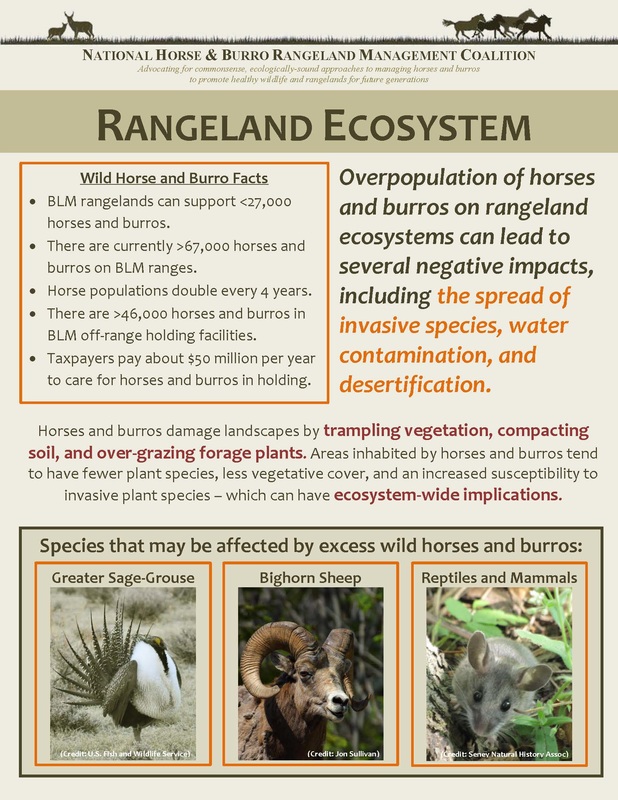|
|
Improved management actions are needed to protect...
|
OvergrazingThe majority of Herd Management Areas contain more than double the amount of wild horses and burros than they can sustain, Appropriate Management Level (AML). Some are over 500% of AML. This overpopulation leads to overgrazing of the rangelands, where the consumption of vegetation can reduce plant species and cause the drying of stream beds in riparian areas. The removal of so much vegetation also makes rangelands vulnerable to invasive species, with cheatgrass in particular spreading throughout the West.
Soil CompactionWild horses and burros often travel along 'trails' throughout the rangelands, following the same paths regularly. The repeated impact of hooves compacts the soil over time. Compacted soil limits water infiltration, increases runoff and erosion, inhibits root and plant growth, and restricts nutrient cycling by soil microbes.
DesertificationConsistent overgrazing and soil compaction exposes the soil to the elements, causing it to dry out. This process is known as desertification and it causes already dry land, such as rangelands, to become increasingly arid. Bodies of water on the range dry up, and vegetation and wildlife dependent on the former rangeland can no longer survive in the desert landscape.
|

